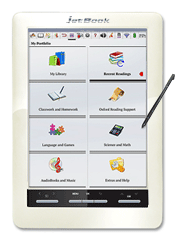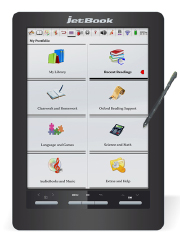School Funding
"It'll be a great day when education gets all the money it wants and the Air Force has to hold a bake sale to buy bombers." ~Author unknown, quoted in You Said a Mouthful, Ronald D. Fuchs, ed.
Learning standards have changed, there is no question about it, but the way we teach and the tools we use remain widely unchanged. Technology is a must in any modern day classroom, it provides the necessary level of excitement to engage students and elicit learning. The obvious "problem" here is the cost and who's going to pay for your technology? Its simpler then you think, the government enacted the "Elementary and Secondary Education Act" which is more commonly known "No Child Left Behind act". In conjunction with this act the U.S. government has allocated $69.9 Billion in funding for 2011 and planning on 4.3% increase in 2012. Citation at (http://www2.ed.gov/about/overview/budget/budget12/index.html )
So how can your school get a piece of the very large $69.9 billion dollar pie? It's not as simple as calling and asking for a fat check in the tune of $1 Million however it is not that complicated either. As long as you know if funding is available for you and how to acquire funding it is quite simple.
The school is the last expenditure upon which America should be willing to economize. ~Franklin D. Roosevelt
Is funding available for you?
YES! Almost every single school in the United States is able to receive funding; many don't because they don't know how to get it. Do you have an ESL program? Do you support the use of educational technology? Do you have Science, Technology, Engineering and Math education? Do you support individuals with disabilities? If you answered yes to any of these funding is available.
What will your funding be used for?
Educate yourself (this is optional really). First, pick a category your funds will be used for. Then read a bit about it. Each document is just about 2 pages so it will only take a minute.
http://www2.ed.gov/about/overview/budget/budget12/crosscuttingissues/edtech.pdf
http://www2.ed.gov/about/overview/budget/budget12/crosscuttingissues/englishlearners.pdf
http://www2.ed.gov/about/overview/budget/budget12/crosscuttingissues/indivdisabilities.pdf
http://www2.ed.gov/about/overview/budget/budget12/crosscuttingissues/pande.pdf
http://www2.ed.gov/about/overview/budget/budget12/crosscuttingissues/stemed.pdf
How to get funding?
The Department of Education (DOE) sets a budget each year for the flowing year. They determine what states and programs get funding and how much.
Step 1: Find the webpage for your states Education Department. (New York) http://www.nysed.gov/
Step 2: Locate the section for grant funding. On the NYSED website there is a tab n top that says "Finance and Business" and then a Link that says "Current Funding and Grant Opportunities". This brings you here. http://usny.nysed.gov/grants/fundgrantopp.html
Step 3: Choose the program right for your application. In this case we selected Grants for Limited English Proficient and English Language Learning students. http://www.p12.nysed.gov/funding/2011titleilepell/home.html
Step 4: Apply! http://www.p12.nysed.gov/funding/2011titleilepell/app.pdf
Step 5: Mail your application to the address posted on the information page.
Hints and Tips for writing your grant Application
- Know your Acronyms: Allot of these grants use abbreviations and acronyms. See a list of the most commonly used ones below.
- Know how and why our product will help: Most grant applications will ask you to "Describe the proposed activities". In other words how will you be spending our money? If it is to help LEP students make sure you stress HOW your purchase will help. If you are buying a jetBook Color or P900 translator stress that the technology will help them learn and communicate in English.
- Work with your finance/purchasing department: Chances are that they have done this before and know the most effective methods to write a grant.
Learning the Jargon:
Most documents use Acronyms which make reading them much more difficult. Here are some examples of key terms and acronyms you will come across:
LEAs - Local Education Agencies
SEAs - State Education Agencies
FY - Fiscal year
LEP - Limited English Proficient
ELs - English Learners
ELLs - English Language Learners.
ARRA - American Recovery and Reinvestment act (2009)
NCLB - No Child Left Behind
HEA - Higher Education Amendments
OPEID - Office of Postsecondary Education Identifier
BEDS Code- Basic Education Data System (NYSED Grant App question)
Need help getting funding or writing your grant?
We at Ectaco are here to help! Just fill out the brief contact form and one of our representatives will get back to you within 48 business hours. If you don't see a response, please check your junk eMail folder and then call 718-728-6110 and ask for Jerry!









